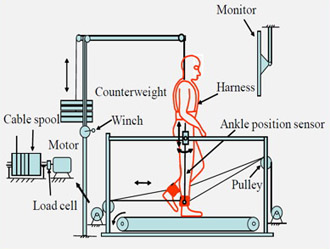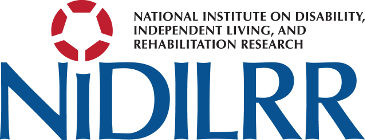Research Activities
Diffusion Tensor Imaging and Restoration of Upper and Lower Limb Function in Children with Cerebral Palsy
The prognostic value of central nervous system plasticity associated with rehabilitative treatment and changes in brain activity associated with mobility and manipulation will be determined in this project to better direct future rehabilitative intervention of children with cerebral palsy. Advanced imaging technologies employed in r2 include fMri, dTi and robotic-assisted therapy.
- Co-PI's
- Michelle J. Johnson, Ph.D.
- Brian D. Schmit, Ph.D.
- Patient population
- Cerebral Palsy (CP): 40
- Overall goal
- Quantitatively assess brain white matter structure (DTI and fMRI) before and after combined intervention strategies of surgery plus novel robot therapies
R2 Update: 2012 Annual Meeting
- R2A LE Progress
- R2A LE Accomlishments
- R2A LE Opportunities
- R2A LE Plans for Year 3
R2 Hypotheses
- Motor adaptations to hamstring lengthening and wrist tendon transfers depend on the underlying structure of the brain white matter tracts, (e.g. corticospinal tracts and thalamic radiations) as measured using DTI
- fMRI measures of brain plasticity will reflect the extent of motor adaptation to hamstring lengthening and wrist tendon transfers
- Robotic interventions will accelerate fMRI changes as well as subsequent recovery of motor function
R2 Aims
- Predict neural adaptations to orthopedic treatments for CP using DTI measures of brain structure
- Characterize brain plasticity in response to combined orthopedic and novel robotic interventions
R2 Initial Development Activities
- Develop a portable bilateral ADLER (biADLER) to reaching and grasping robot therapy
- Modify and adapt upper limb fMRI tools to accommodate children
- Adapt imaging techniques to accommodate children
R2 Presurgical Imaging
- Characterize brain structure and functional activity of children with CP
- fMRI protocol, upper extremity
- Motor task and device combination
- Grasping and/or simultaneous elbow reaching and grasping motor tasks
- fMRI protocol, lower extremity
- Images will be obtained to quantify brain activity
during pedaling - Custom, MR-compatible pedaling apparatus with an optical encoder
- Images will be obtained to quantify brain activity
R2 Interventions: Upper Limb
- 20 children will undergo routine orthopedic musculotendinous surgery
- All children will be randomized into either standard therapy (continuation of home exercise program) or the standard therapy augmented by task-oriented robot-assisted therapy
- biADLER robot
- Practicing reaching and grasping
- Movements will be adaptively assisted or resisted
R2 Interventions: Lower Limb
- 20 children will undergo routine hamstring lengthening surgery
- Children will be randomized into either standard therapy alone or standard therapy augmented by robot-assisted gait therapy
- Novel robotic system, CaLT, will provide controlled loads to the legs
- Resistance to knees beginning in
early swing - Assistance to ankles in late swing
- Resistance to knees beginning in
R2 Anticipated Timeline
| Tasks | Year 1 | Year 2 | Year 3 | Year 4 | Year 5 | |||||||||||||||
|---|---|---|---|---|---|---|---|---|---|---|---|---|---|---|---|---|---|---|---|---|
| Adapt imaging techniques | Q1 | Q2 | Q3 | Q4 | ||||||||||||||||
| Develop upper limb robot and adapt robotic intervention techniques | Q1 | Q2 | Q3 | Q4 | Q1 | Q2 | Q3 | Q4 | ||||||||||||
| Finalize experimental set-up | Q1 | Q2 | Q3 | Q4 | ||||||||||||||||
| Subject recruitment | Q2 | Q3 | Q4 | Q1 | Q2 | Q3 | Q4 | Q1 | Q2 | Q3 | Q4 | Q1 | Q2 | Q3 | Q4 | Q1 | Q2 | Q3 | ||
| Data collection in typical children | Q2 | Q3 | Q4 | Q1 | Q2 | Q3 | Q4 | Q1 | Q2 | Q3 | Q4 | |||||||||
| Data collection in CP children | Q1 | Q2 | Q3 | Q4 | Q1 | Q2 | Q3 | Q4 | Q1 | Q2 | Q3 | Q4 | Q1 | Q2 | Q3 | |||||
| Data analysis | Q1 | Q1 | Q1 | Q3 | Q4 | Q1 | Q2 | Q3 | Q4 | |||||||||||
| Publications | Q1 | Q1 | Q1 | Q3 | Q4 | Q1 | Q2 | Q3 | Q4 | |||||||||||









